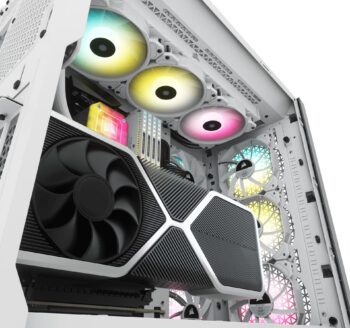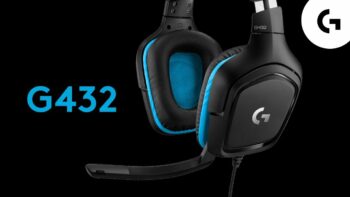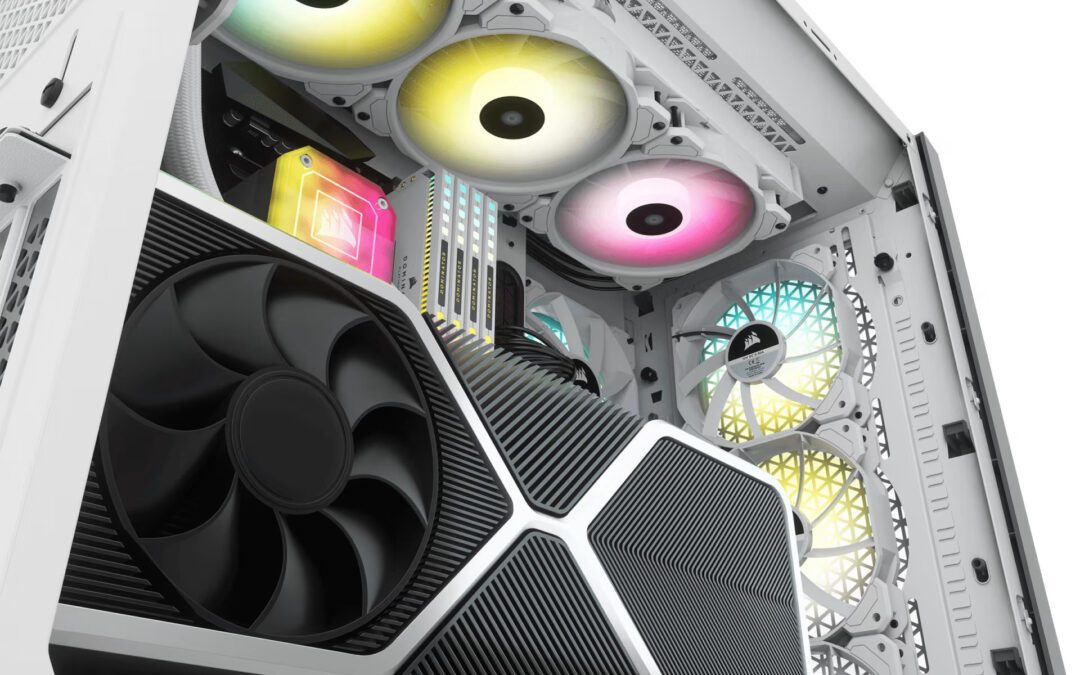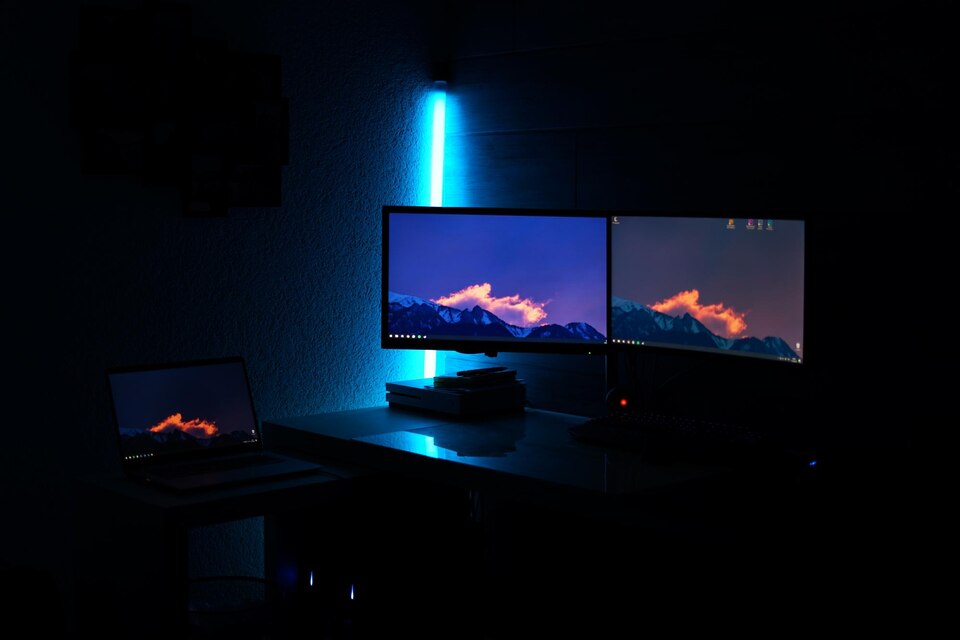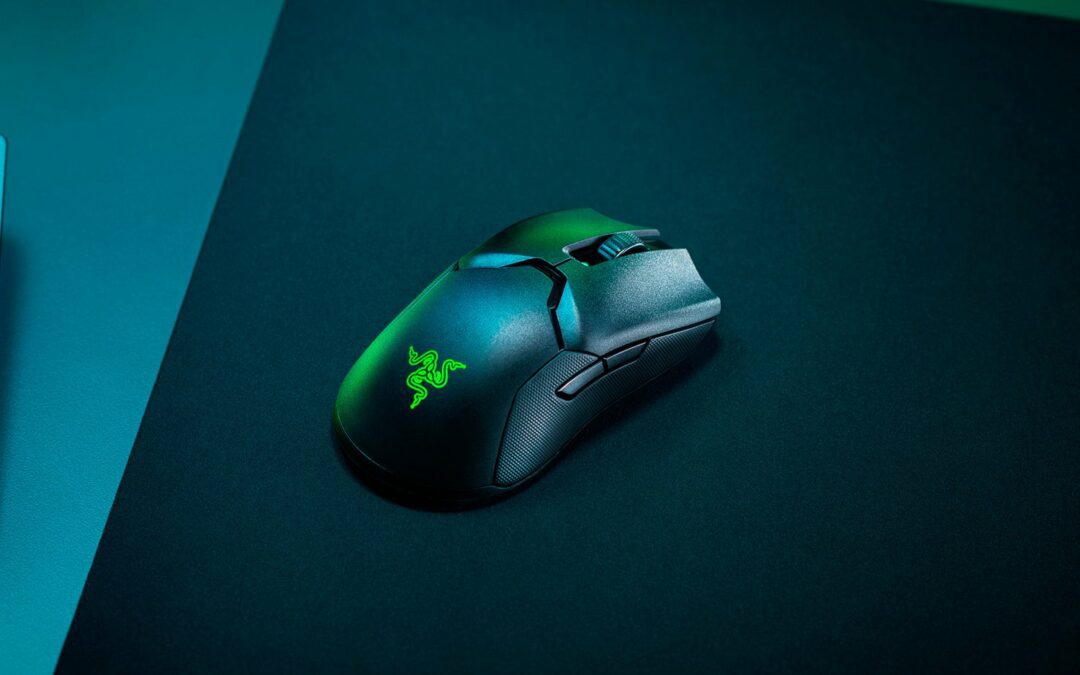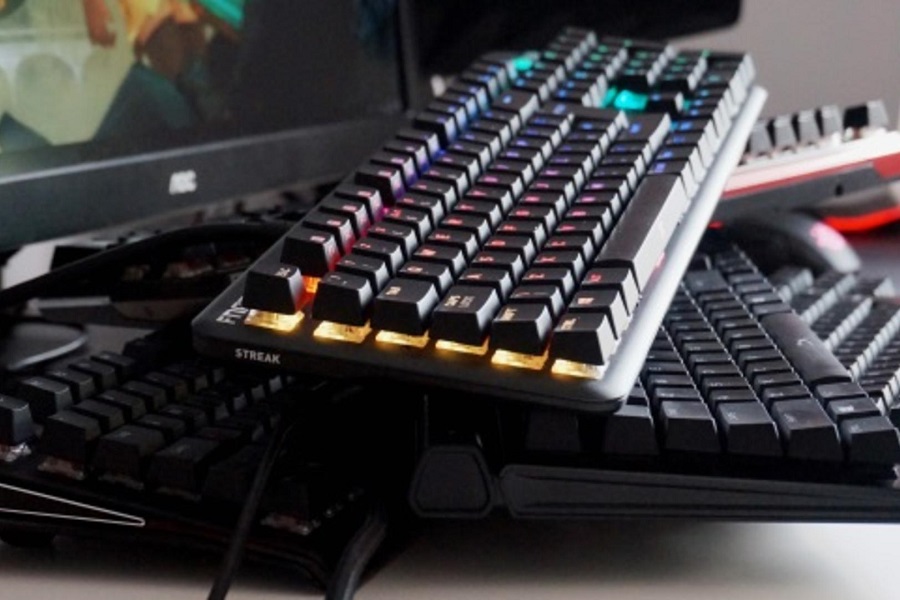
In the past decade, touch-based interfaces have become the norm of digital devices and many gadgets.
Even then, it is difficult to imagine computers without a good keyboard.
While their primary need and design have not changed since the beginning, we now have many keyboard types to choose from, especially if you are a professional/occasional gamer.
While so many options are always confusing, the biggest dilemma you might have is choosing between mechanical keyboards and membrane keyboards.
It’s not like a toss can help you choose one of these two options, though. Mechanical and membrane-based keyboards have their fair share of advantages and disadvantages. There are also a few exceptions that you must know about.
Considering all these, we thought it’d be a great idea to prepare an article on everything you should need to know about mechanical keyboard vs. membrane keyboard duel. To understand things in a better way, we will start with the history of computer keyboards.
The History of Keyboard Technology
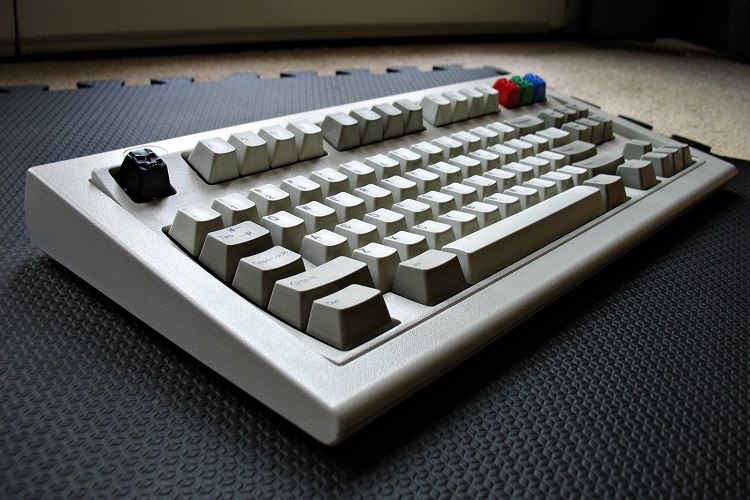
There are a few elements you already know about in the history of keyboard technology. One of them is that the core idea behind a computer keyboard can be traced back to typewriters.
Typewriters were devices used to type text onto printed paper by adding one character after the other.
These devices were mechanical and were the easiest way to create documents before the digital revolution and printing entered the stage. Over time, the typewriter industry had seen multiple designs and inner technologies.
For instance, you could spot electric typewriters, which became quite popular during the second half of the twentieth century.
These devices also solved one of the common problems with mechanical typewriters: the annoying instances of typewriter jams.
Later, when the computer revolution began with the ENIAC, the core design of the keyboard was borrowed from electric typewriters. Nevertheless, in comparison to the electric typewriters, the early designs of computer keyboards were considerably bulky.
People had to wait until the 1980s to come across a simple keyboard design and get the job done. In 1986, when IBM launched an iteration of its PC, the Model M keyboard was included in the package.
The M keyboard was a mechanical keyboard and used a sturdy construction.
The device also provided a pronounced typing experience to customers. For quite a few years, mechanical switches were the norm of keyboards. It was able to find the same switches on the computers launched by Apple as well.
During the 1990s, however, we saw a change of the status quo. As companies were looking for more compact and lightweight designs, membrane-based switches became common among computer keyboards.
While it has remained the core standard in the subsequent decades, we had also seen some worthy additions to the package.
For instance, the markets had seen the launch of touch-based, roll-up, and ergonomic keyboards. The history would also tell you about some steeply unsuccessful ones like the jellyfish keyboard.
Today, we can see a co-existence of traditional and modern designs for a computer keyboard. With the rise of the laptop culture, membrane-based keyboard switches continued to rule
On the other hand, keyboards for desktops had used a combination of multiple designs. We should also mention that gamers and those who loved the clicky tactile feedback stuck to mechanical-style keyboards.
While there are so many options in the market, the real fight nowadays is between mechanical and membrane keyboards.
Now, let’s see the significant differences between mechanical keyboard and membrane keyboard.
Mechanical Keyboard Features
First, we will look at the different types of mechanical keyboards.
Different Types of Mechanical Keyboards
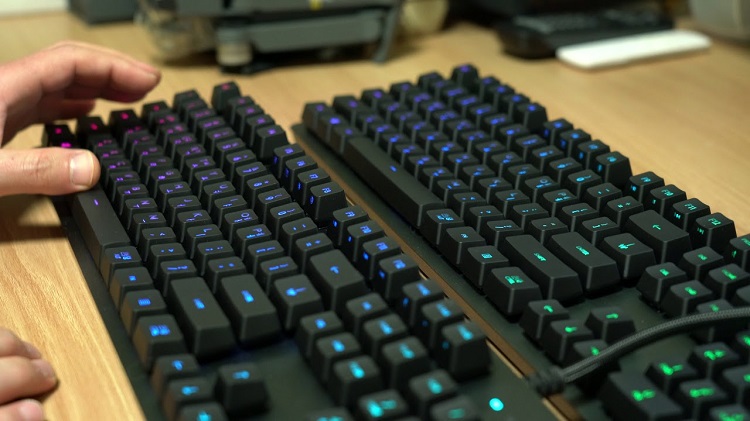
If we keep the exterior design aside, you can classify mechanical keyboards based on the switches they use.
- Linear Switches on mechanical keyboards follow a simple operation design. The switch would simply move up and down without causing any clicking noise. More importantly, there won’t be any tactile feedback. As a result, keystrokes on linear-switch mechanical keyboards are smooth and fast. That’s why many gamers prefer linear switches.
- Tactile Switches are designed to provide maximum tactile feedback for every keystroke. Although it moves up and down, the bump in the middle notifies the user of every keystroke. This type of design is popular among users who need to type a lot. It is worth noting that tactile-switch keyboards could provide decent feedback.
- Clicky Switches are almost similar to tactile switches in terms of design. However, unlike the tactile-switch mechanical keyboards, clicky-switch keyboards will make a ‘click’ sound for each keystroke on the board. While many love silence while typing, many use the click sound like a good background track. Therefore, clicky switches are for them.
There are subcategories within these switch types, but it’s impractical to cover all of them. Here are a few that you should know, though.
Hot-swappable Switches have become another buzzword among mechanical keyboard enthusiasts in recent years. This design allows you to replace the switch for every key according to your style.
Therefore, if you feel you need a clicky switch instead of linear ones, you can simply swap them. While these keyboards are generally expensive, they cut down the cost over time.
You should also keep in mind that all keyboard switch designs are suitable for everyone. You have to pick a design based on various factors, such as your tactile preference and the auditory feedback you like. You must also look into your typing style and your hand size.
Benefits of Mechanical Keyboards
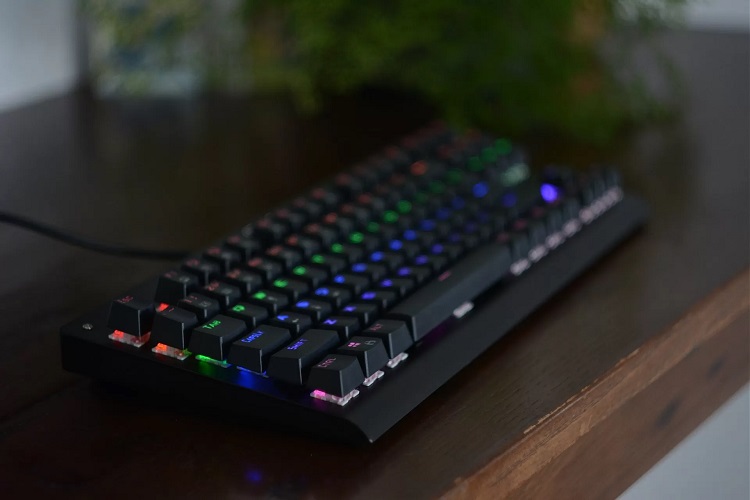
Here are the most noticeable benefits of using mechanical keyboards. Most of these points become valid as we compared mechanical keyboards with membrane keyboards.
- Mechanical keyboards are very durable and sturdy. The amount you invest in a mechanical keyboard will serve you well for several years, with no compromise on the typing experience quality.
- The switches on mechanical keyboards are more responsive and precise. Because they provide useful feedback, you can attain better accuracy while typing or gaming.
- The typing experience on a mechanical keyboard is more comfortable, especially if you spend hours straight typing code or documents. It applies to long-term gamers as well.
- You have better options for customizability with mechanical keyboards. As we said, some keyboards let you replace individual switches.
- You can expect additional options like RGB backlighting and custom-mappable switches on these keyboards because of their bigger design.
We have also answered some of the common questions you may have.
How long do mechanical keyboards last?
While it is impossible to specify a figure, a standard mechanical keyboard would last between five and ten years.
The actual number depends on how much you have spent on the keyboard and your style of typing.
For instance, a gamer who uses the keyboard 8 hours a day will have to replace the keyboard sooner than a gamer who uses the keyboard for 2 or 3 hours a day.
Are mechanical keyboards faster than membrane?
While mechanical keyboards are precise and comfortable, speed is a relative function. The speed you have from a mechanical keyboard depends on your typing style and experience.
As we said earlier, some keyboard designs have switches with tactile feedback and click sound, which take more time. However, once you get used to those feedback indicators, you can enjoy the average speed.
Cons of Mechanical Keyboards
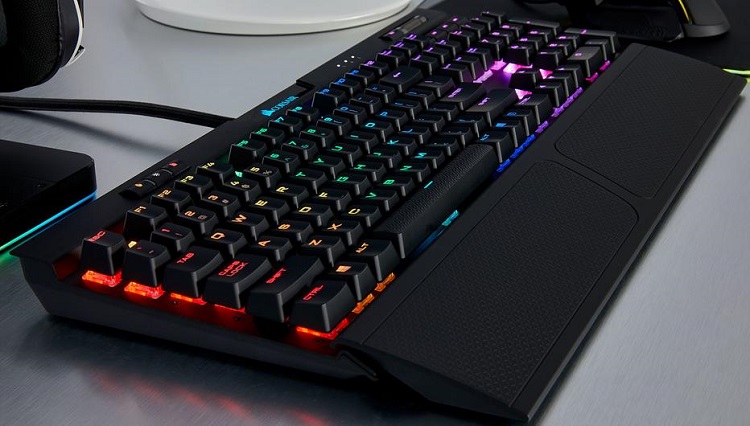
Mechanical keyboards aren’t perfect, and you should know about the significant cons before you get one.
- Mechanical keyboards are comparatively louder. Even when you go for keyboards with a linear switch design, you can notice the noise in the environment. So, they’re not suitable if you prefer silence.
- These keyboards are also very bulky. You cannot carry them around with the same ease with which you move around membrane keyboards.
- Because mechanical keyboards focus more on the typing experience, they usually have fewer options for connectivity. For instance, finding wireless and Bluetooth ones is an expensive affair.
- Not everyone can retain the same typing speed with mechanical keyboards. People who have used a membrane keyboard all their life may have difficulty shifting to the mechanical keyboard world.
- Finally, mechanical keyboards are noticeably expensive. On average, a mechanical keyboard costs almost double a membrane keyboard or higher. It isn’t the best thing for everyone.
Why Are Mechanical Keyboards So Expensive?
As we mentioned, mechanical keyboards are more expensive than membrane keyboards. Some keyboards even cost as much as an entry-level laptop, you know. That makes us wonder: why are these keyboards very expensive?
The answer is simple. One of the reasons why mechanical keyboards are expensive is that they require some of the world’s best materials.
These materials are chosen based on their durability and comfort. In the end, manufacturers aim to provide the best typing/gaming experience, even if that means charging a couple of hundred dollars from the customer.
Similarly, compared to membrane keyboards, mechanical keyboards use an intricate design, which involves many elements.
Each of these elements may have its layer of customization. Designing the complex components is a time-consuming affair, and they cost a lot. Considering that the maker needs the best materials for these extra portions, the mechanical keyboards become way more expensive.
On the bright side, you would benefit from an extended warranty and customization options when you pay a considerably high amount for a mechanical keyboard.
Membrane Keyboard Features
Here are the membrane keyboard types you should know about.
Different Types of Membrane Keyboards
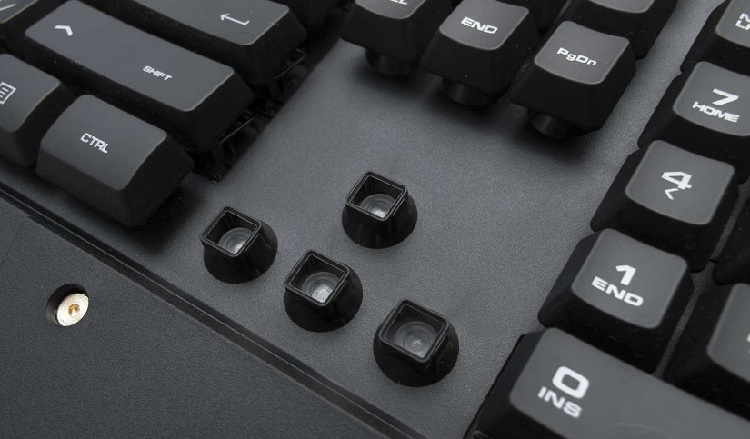
We can classify membrane keyboards based on their design and working methods.
- Flat-panel Membrane Switch keyboard uses conductive ink to register keystrokes. When a user has pressed on a key, the circuit gets completed, and the signals are sent to the computer. This design is not so great for tactile feedback, though.
- Full-travel Membrane Switch keyboards are the more common options on PC keyboards. This design uses conductive strips, and the circuit is completed when the key is pressed. Because of the design, it may offer additional tactile feedback.
- Dome Switch keyboards combine flat-panel membrane and mechanical switches to register all the keystrokes on the board. There are different sub-categories in this section, and scissor keys are one of them. At the same time, scissor keys have a better lifespan than the typical membrane keyboard.
You may also be familiar with brand-exclusive keyboard types like the Magic and the Butterfly keyboards. In most cases, these designs use some extra material on top of the dome switch to provide a more pronounced typing experience. At times, they come across problems as well.
For instance, Apple had launched their Butterfly keyboards with much ambition, but things didn’t go as per their plan.
The keyboards started accumulating so much dust, and the company had to offer replacements on a global scale. On the other hand, Apple’s Magic Keyboard designs have been a users’ favorite for an extended period.
Benefits of Membrane Keyboards
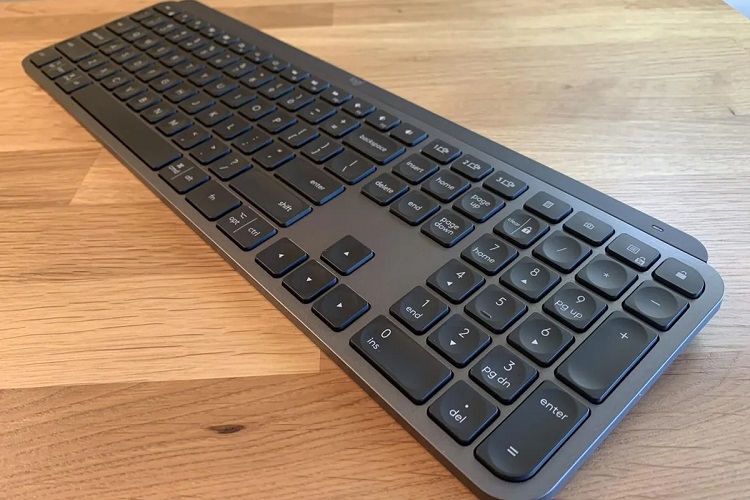
Let’s quickly look at the significant advantages of membrane-based keyboards.
- Membrane keyboards are very simple and inexpensive. When combined with some extra engineering on top, these keyboards become the perfect choice for laptops.
- Compared to mechanical keyboards, membrane keyboards require minimal maintenance. Most of the time, they come with built-in protection from dust and debris.
- Because these keyboards are less bulky, you can carry them around easily. That’s why the majority of Bluetooth/wireless keyboards use membrane-based design.
- Since the design of membrane keyboards is simple, manufacturers can exercise some freedom when it comes to versatility. As a result, you can find ergonomic and concept-based keyboards.
- Membrane keyboards are relatively quieter. They don’t make a sound for every keystroke. As a result, you can enjoy a more peaceful typing experience.
Cons of Membrane Keyboards

Since they are not perfect, you have to keep in mind the following disadvantages of membrane keyboards.
- The durability of membrane keyboards is a highly debated topic. You can’t expect a membrane-based keyboard to last for a decade or so. In most cases, you’ll have to replace them in a couple of years.
- Membrane keyboards are restricted to a 2-key rollover. It means that the keyboards cannot handle more than two simultaneous keystrokes at the same time. It isn’t so suitable for gamers.
- Some types of membrane keyboards are noted for their vulnerability to dust. For instance, we have the case of the infamous Butterfly keyboards, which ended up causing a lot of trouble to users.
- The typing experience on membrane keyboards is not the most comfortable one. As we said in mechanical keyboards, those who make a shift will have to face some issues.
- Membrane keyboards offer little to zero options of customizability. It could be a problem for many who need to choose the best keys and switches for their needs.
And here’s the answer to a question you may have.
How long does a membrane keyboard last?
As we mentioned earlier, we can’t give you an exact figure on how long either keyboard type will last.
However, you should keep in mind that membrane keyboards are less durable than mechanical keyboards.
It is partly because mechanical keyboards use high-quality raw material for construction. More importantly, users can avail customization options as per their needs. On the other hand, membrane keyboards use raw materials of relatively low quality.
We don’t mean to say that membrane keyboards will wear out in a year. On the contrary, these keyboards have been designed to deal with millions of keystrokes, which are enough for a few years.
Then, again, if you type too much, you will see some wear and tear relatively sooner. Unless it happens, a membrane keyboard should last for a solid couple of years.
Conclusion
Mechanical keyboards are the better option if you need a premium typing experience. These keyboards use high-quality raw material and provide maximum comfort while typing. While they are indeed bulky, you can benefit from the customization options and key-rollover options.
Because of these characteristics, gamers tend to choose mechanical keyboards over membrane keyboards. The only limitation is that you should be ready to shell out some more dollars.
Membrane keyboards are considered the go-to choice for most PC and laptop manufacturers. This type of keyboard is not only cost-effective but also easy to carry. Because of this, you can enjoy a better lineup of connectivity options like Bluetooth and Wireless.
While they have their fair share of issues, such as subpar durability and proneness to dust and debris, people love membrane keyboards for the smooth & silent typing experience.
In the end, you can choose between these keyboard designs based on what you expect from your keyboard. For instance, unless you are a hardcore gamer or a developer who needs tactile feedback, there is no point in spending hundreds of dollars on a super-fancy mechanical keyboard.
On the other hand, merely getting a mechanical keyboard wouldn’t make you a gaming influencer overnight, either.
Therefore, make sure you value all your preferences and needs before you pick one from the duo.
